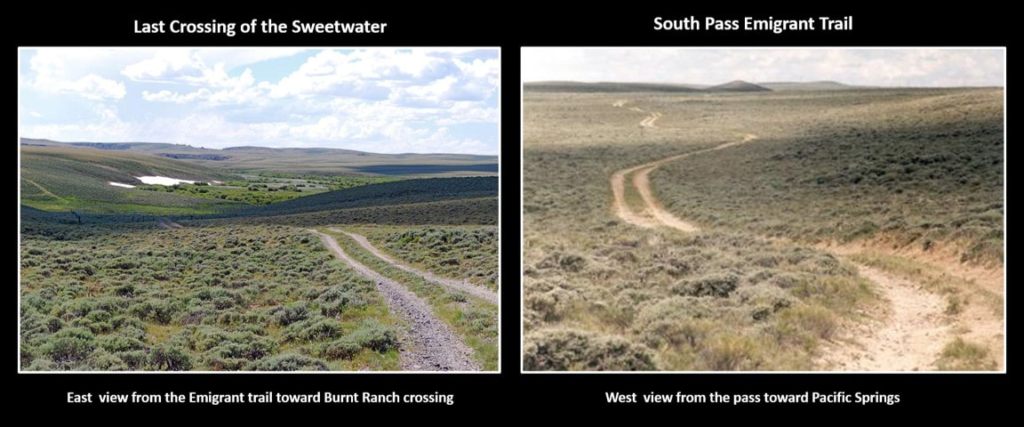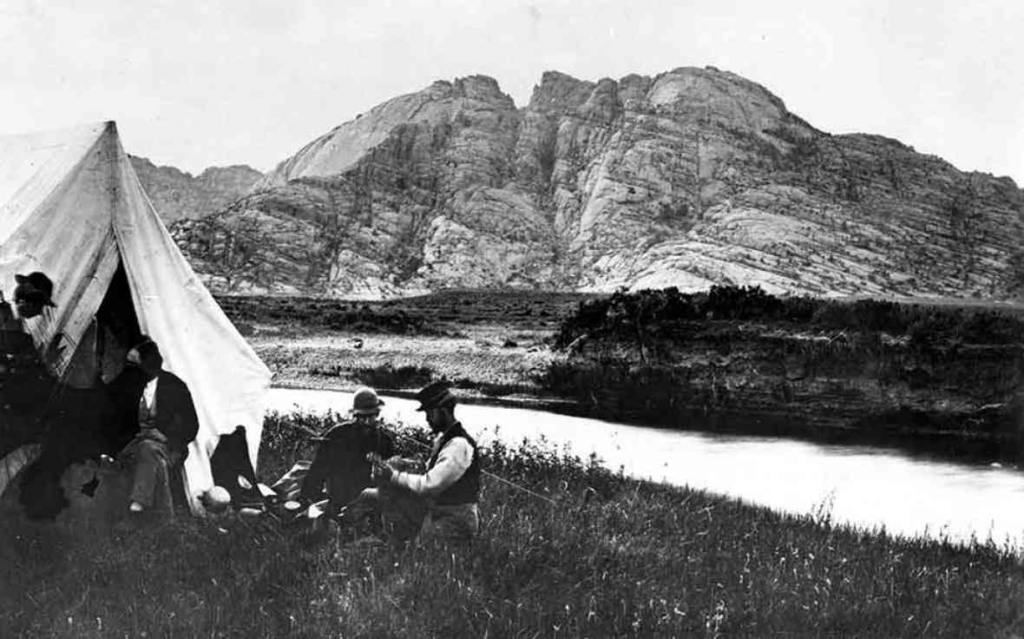The Rocky Mountains constituted a major obstacle to passage to the west coast of North America. The trail blazed by Lewis and Clark could not accommodate wagon traffic. The deserts of the southern routes were not without its share of dangers. Although no easy trek, at 7,412 feet South Pass did offer a route through the formidable barrier that the Rocky Mountains represented.

The existence of the pass was well known to the Native Americans but unknown to the European/Americans. It was accidentally “discovered” due to ongoing conflicts with some of the northern tribes…
In June of 1812 members of Astor’s Fur Company left Astoria at the mouth of the Columbia River to report to Mr. Astor awaiting them in St. Louis. In an effort to avoid an Indian conflict Robert Stuart and 7 others started drifting south along the spine of the Rocky Mountains. After several blunders and near disasters in their effort to stay clear of the Indians, their travels took them to South Pass, November of 1812. It was only after traveling some distance down the Sweetwater River that they realized they had crossed the Continental Divide. The party would winter on the North Platte and arrive in St. Louis in April 1813. Although Robert Stuart provided a well defined map and a journal of the trip, the pass was ignored for several years.
Employees of The Rocky Mountain Fur Company, founded by William Henry Ashley and Andrew Henry “rediscovered” South Pass as part of a fur trapping expedition up the Sweetwater River in 1824. The following year, 1825, Ashley’s company would establish a trading post on Utah Lake located several miles south of the Great Salt Lake.

In 1832, Army Captain Benjamin Bonneville would lead a train of 20 wagons and 110 men over South Pass and establish Ft. Bonneville on the Green River, proving that wagons could pierce that barrier, that there was a way across the Continent… The stirrings of a Continental United States and the dreams of “Manifest Destiny” were now a distinct possibility.
South Pass is a thirty five mile wide sagebrush covered swale in the Central Rocky Mountains and was once the center of traffic to and from the western US. It provided a route that wagons could cross, that dreams could surmount in an effort to begin anew in the west.
July 1836 Marcus Whitman, his wife Narcissa, Henry and Eliza Spaulding crossed South Pass on their way to the Oregon Country to establish missions among the various Indian Tribes.

Between the years 1841, when the first organized wagon train crossed the continent, and 1869, when the Trans Continental Railroad offered an alternative to the long and often irksome travel; upwards of half a million people crossed the Continental Divide at South Pass.
Several of the steeper grades the trains encountered between the Platte River and the summit of South Pass were often named “Heart Break Hill”. This is where the immigrants were forced to lighten the wagon in order to conserve their draft animals’ strength for the rest of the arduous journey. Heirlooms were often left in the dust as the reality of the climb to the Continental Divide became more apparent.
One individual said to a wagon master, “it’s Heaven to be here but Hell to get here”. The wagon master replied, “If you think this is Hell, the real test lies ahead. For sure it is not strung out along the Sweet Water”.

The Fourth of July brought a warning from the wagon masters, failure to cross South Pass by the Fourth of July put the train in danger of being trapped in early snows in the Blues of the Oregon Country or the craggy Sierras of California.
Until the railroad was completed, whether you were bound for the Oregon Country, the gold fields of California or the Mormon communities around the Salt Lake Basin all crossed through South Pass. It served as the route of the “Pony Express” and the first trans-continental telegraph. The “Pony Express” would retire with the opening of the Trans-Continental Telegraph and the telegraph lines would be moved to the route of the railroad in 1869.
South Pass would continue to be utilized in fewer and fewer numbers, ending with the turn of the century. Today a state highway (#28) crosses South Pass; some 60 miles to the south The Union Pacific Railroad and Interstate 80 facilitate traffic across the middle of the continent.
Cast aside in the hustle and bustle of the modern world, this historic site still contains the remnants of wagon ruts cut in the soil over a hundred years ago. The prevailing westerly winds still fill the air with the smell of sage on a warm sunny day; listen carefully, does this same wind still carry the echoes of the creak of wagons and the grunt of oxen??